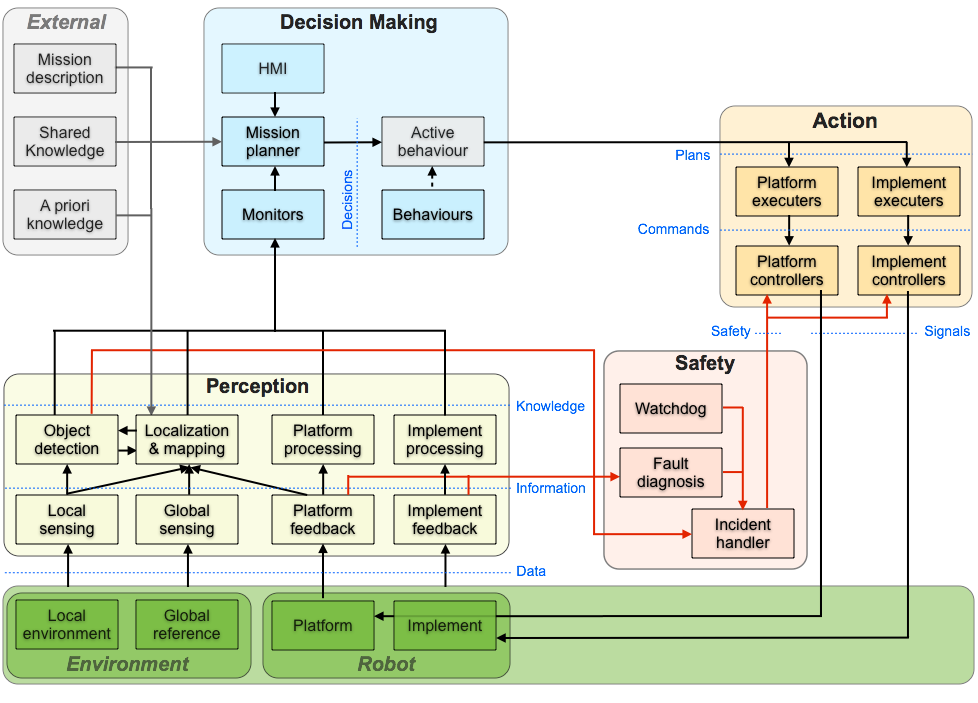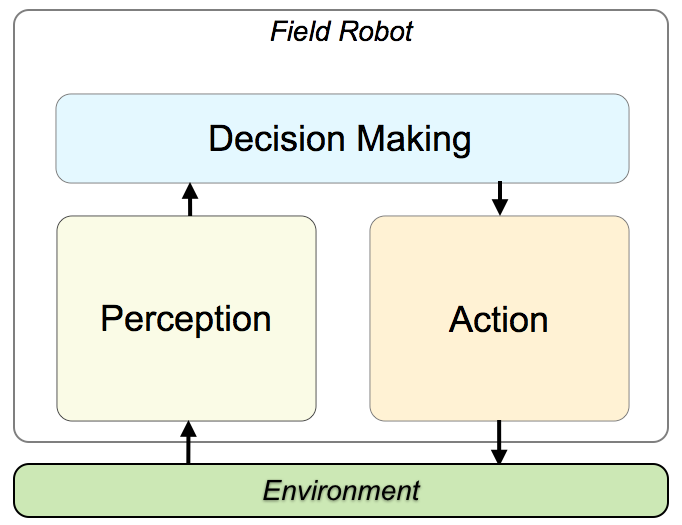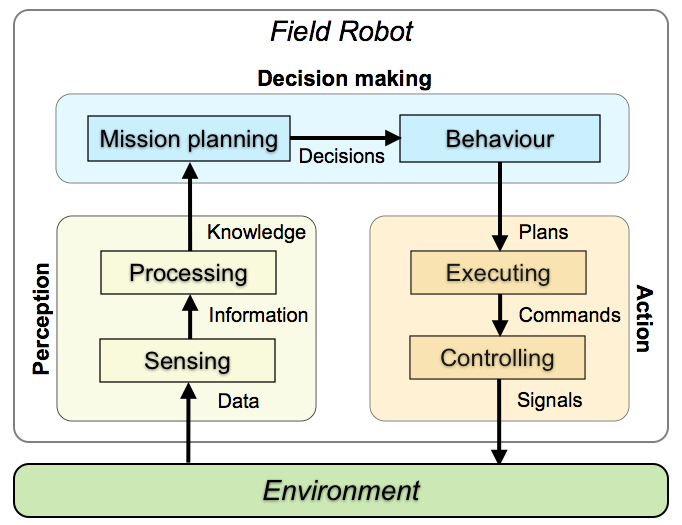FroboMind:Architecture
The FroboMind architecture is based on an intuitive decomposition of the perception, decision making and action tasks of a field robot.
The robot perceives the surrounding environment through its sensors and feedback from the robot and implement systems. It combines the perception with shared and a priori knowledge. Based on this accumulated knowledge, the robot mission description and user interaction, the robot selects a behaviour that seek to optimize the fulfillment of the mission task. The behavioural actions are then executed with respect to time and state.

Data flow is illustrated by connecting arrows. An arrow tip next to a module indicates that the data is used as input while the lack of an arrow tip indicates that data is outputted from the module. In order not to clutter the overview it is assumed that any component has access to data accessible by it’s predecessor, and therefore multiple connections to successors are shown only when relevant to the understanding of the architecture. Data available for all components have not been included in the overview.
Internal fault diagnosis, system watchdog and incident handling tasks are organized as a separate Safety layer to ensure maximum simplicity and clarity in these modules and hence minimize potential software errors, which in turn ensures a high level of reliability. The safety layer serves to improve the robustness of the robot autonomy by facilitating behavioural responses to internal and external incidents. The safety layer is capable of activating but not deactivating or inhibit activation of the hardware emergency stop circuit.
Modules represented by a grey rectangle are included to fully describe the functionality. They do not represent actual code.
Explanation
Figure 2 illustrates a simple decision making agent. Perception is the process or the capability to attain awareness and understand the environment surrounding us by interpreting, selecting and organizing different type of information. The agent actions are based on this understanding.

Figure 3 illustates an intuitive decomposition of the perception, decision making and action tasks for an autonomous robot operating in its environment.

The FroboMind conceptual architecture (Figure 1) represents an expansion of this decomposition with respect to a field robot tool carrier and implement designed for precision tasks. The expansion is indicated by the grouping of components into modules in the perception, decision making and action layers. The data flow is represented by the blue dashed lines.